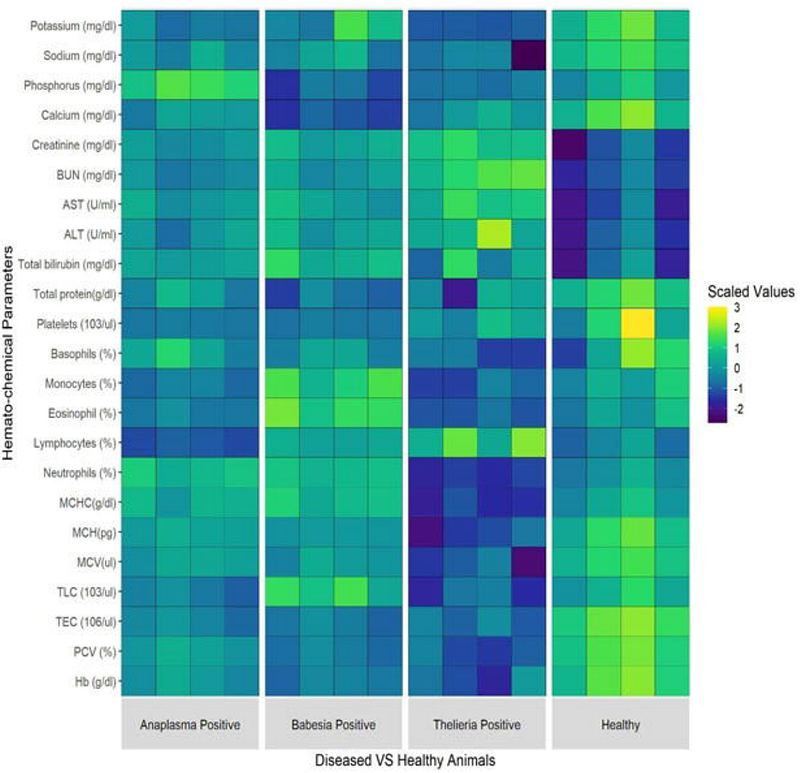HEMATO-CHEMICAL VARIATIONS- A DIAGNOSTIC TOOL FOR BABESIA, THEILERIA AND ANAPLASMA INFECTIONS IN CAPTIVE HOG DEER (AXIS PORCINUS)

HEMATO-CHEMICAL VARIATIONS- A DIAGNOSTIC TOOL FOR BABESIA, THEILERIA AND ANAPLASMA INFECTIONS IN CAPTIVE HOG DEER (AXIS PORCINUS)
Azhar, M.; Saleem, M. H.; Chaudhary, A. S.; Khan, M. R.; Khan, B. N.; Hussain, R. F.; Awan, F.; Khalid, M. M.; Nadeem, J.
AbstractHog deer are an essential component of Pakistan\'s biodiversity. Their conservation helps maintain integrity of local ecosystems, contributing to overall stability and balance of region\'s wildlife populations. In Pakistan, they are classified as an endangered species according to IUCN. Theileria, babesia and anaplasma are among most prevalent blood parasites in ruminants which require diagnosis at early stages of the infection so that treatment protocols can be followed and more severe pathological alterations can be prevented. The changes in hemato-chemical parameters caused by Theileria, babesia and anaplasma were recorded individually and then compared with healthy group of hog deer respectively. Alterations in hemato-chemical parameters produced by these parasite-infected hog deer were assessed as potential diagnostic tools for distinguishing between individual blood parasites. Total leukocyte count, monocytes and eosinophils were observed to be higher than normal in babesia infected hog deer while level was lower than normal hog deer in anaplasma and theileria infected hog deer. The main objective of this study is to promote early diagnosis of parasitic infections in hog deer to facilitate prompt treatment, pathological prevention and allocate resources for further research on hemato-chemical parameters as diagnostic tools, enhancing understanding and management of blood parasite infections in hog deer.


